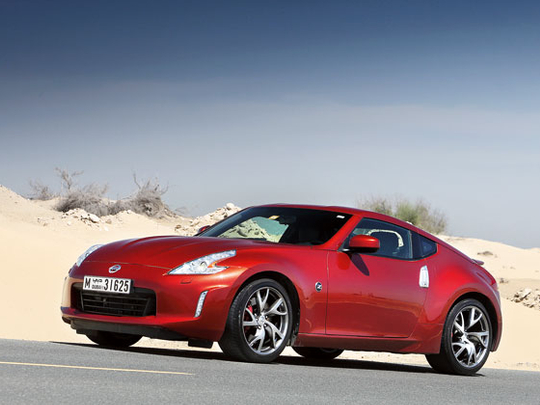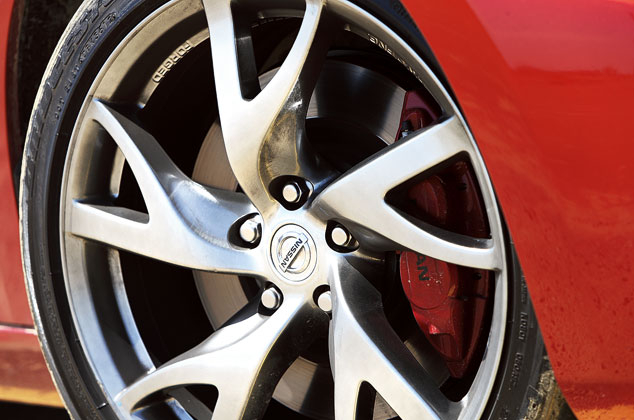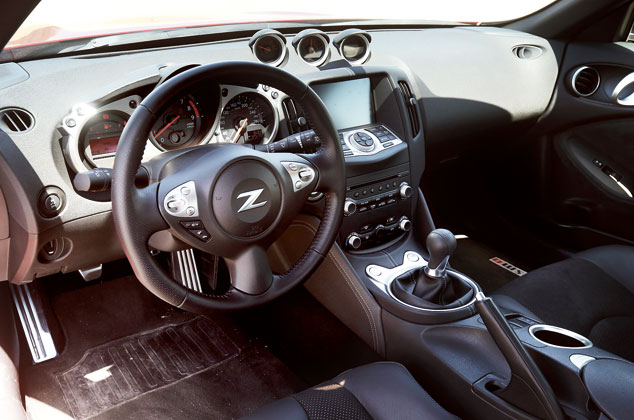
It took Nissan Middle East four years to catch on, but someone’s finally noticed that the 370Z sportscar isn’t selling. But how are they still around? At the beginning Z-car enthusiasts simply imported their cars from the States where, at launch, prices started from around Dh120K, while Middle East-spec cars commanded stickers closer to Porsche Cayman money or almost 200 grand.
Now for the 2013 model Nissan is asking for at least 30 per cent less than before, with the Japanese company’s Middle East headquarters quoting a starting price of just Dh139,000 for this facelifted model.
It’s time for us to get reacquainted with the 370Z, then, especially since our sportscar senses have been recalibrated recently thanks to plenty of experiences with lessons in rear-wheel drive perfection from Toyota’s 86 and the Porsche Cayman.
The styling of the 2013 370Z is as steroidal as ever, with a slightly tweaked front end as well as some new LEDs for the facelift, plus a new 19in wheel design and two colours added to the palette — Midnight Blue and this tester’s Magma Red.
Available features on the 2013 model include Nissan’s Hard Drive Navigation System, rear-view camera, Bluetooth and the standard keyless entry and start. What’s unchanged is the 328bhp 3.7-litre V6 that easily overwhelms the fat rear tyres (275/35 R19), while sounding like an industrial air conditioner. The power is great, especially when you jump from an 86 into the Z. However, there are far too many drivetrain vibrations, the six-speed manual gear change isn’t as precise and the steering is heavy.
The manual 370Z still has the older SynchroRev Match system that blips the throttle for you on the downshifts
so you don’t have to muck about with heel-and-toeing, but it’s not as good as the manual-transmission Cayman’s system, which matches the revs more closely (the Z’s pedals are nicely placed should you want to do things yourself, but their springs clunk noisily in the footwell).
Its stumpy dimensions — it’s only 20mm longer than an 86, but it’s considerably taller with a shorter wheelbase — give the 370Z direct turn-in and handling capabilities, but you’d better be awake if the rear end abruptly decides to unstick.
This is not an easy car to drive fast, not nearly as forgiving as, to bring them up yet again, the 86 and the Cayman. It probably doesn’t help that the 370Z still lives on top of Nissan’s FM platform designed, basically, for large saloons and crossovers such as the Infiniti G35 and FX SUV. As you can imagine, then, it’s heavy, weighing in at 1,500kg, which explains the reluctant weight transfer through S-bends as the car’s weight lolls about with a slight pause at each extreme.
The steering wheel is oval-ish, which seems a bit weird at first, but you soon forget about its significance because it does nothing to free up room for your knees. In fact the whole driving position is awkward, with a bulky but well-padded seat and a steering column that adjusts for rake but not for reach. This isn’t great for a sportscar which should be all about excellent visibility and driving ergonomics. The rest of the interior is generally well appointed and nicely equipped for something that now starts from Dh139K.
Nissan Middle East may have ignored the facts for a while, but now that the company’s caught on, sadly the facts remain the same: in 2013, as in 2009, the 370Z isn’t the definitive sportscar. It’s purely a Z-car enthusiast’s choice, who can now at least skip the wait for his US-spec model and drive his dream car straight out of a regional dealership. But the truth is the game has moved on.














